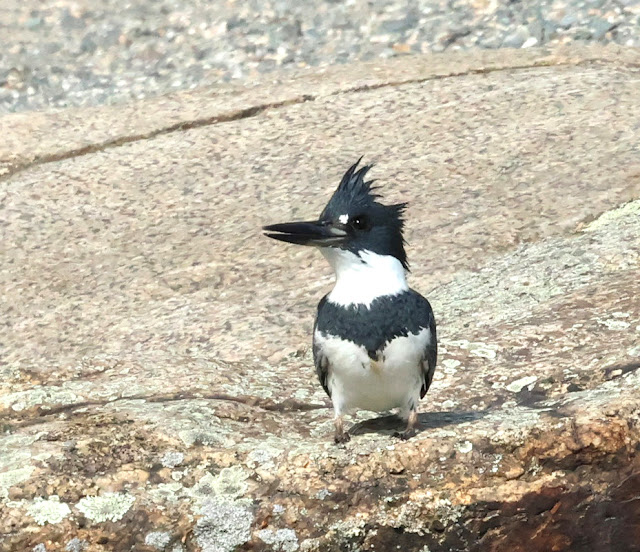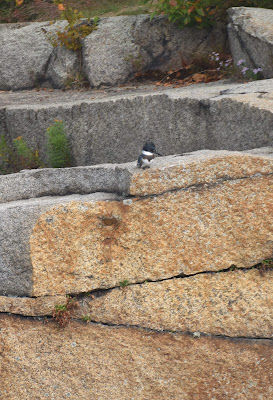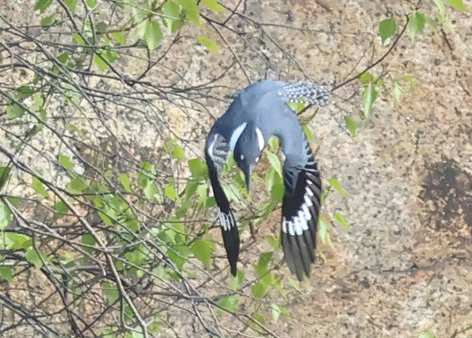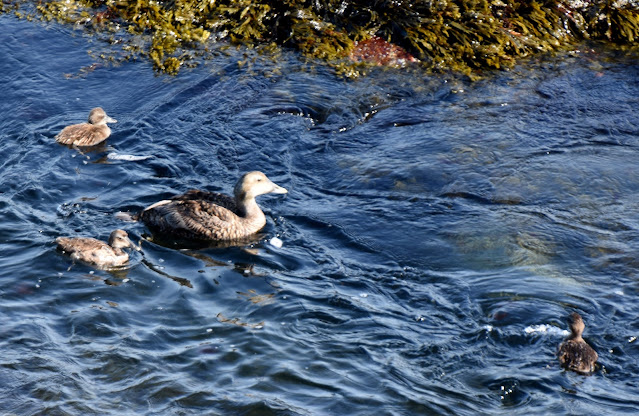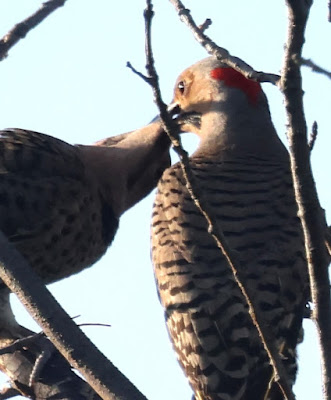 |
Kingfisher in Folly Cove |
Occasionally it ventures down to the shoreline on the lookout for shallow water prey.
 |
Subduing and swallowing a captured minnow |
A couple of times I've been able to capture it digesting a fish after a successful foray in the quarry. Obtaining legible live action photos of its plunge to the water has been a special challenge.
 |
Kingfisher diving |
Back in 2016 I had my first and best encounter with a Kingfisher's predatory prowess.
 |
Disappearing under water |
A Kingfisher parent seemed to be giving fishing lessons to a youngster, in a not impossibly distant corner of the quarry.
 |
Rising to its perch |
At the time I all had was a Sony travel camera. It was a credible tool for recording the highlights of gypsy excursions around the Park but lacked the optical resolution for close contact with this shy bird.
 |
The shrieking Devil Bird |
Over the next few years I persisted in a quixotic mission for good photos of it fishing.
 |
A pretty good view |
Then one day I came upon my quarry conspicuously perched.
 |
The Kingfisher diving |
This time I had a good camera, a tripod, and quick reactions.
 |
The successful hunt |
The Kingfisher and I each had the moment we'd been waiting for.
With mindful practice I've been able to soften my attitude to see it as a fascinating, wary bird rather than as a diabolical adversary--usually. But just when I think I've mastered equanimity I meet frustration once again. The Kingfisher and I have an ongoing psychic destiny.









